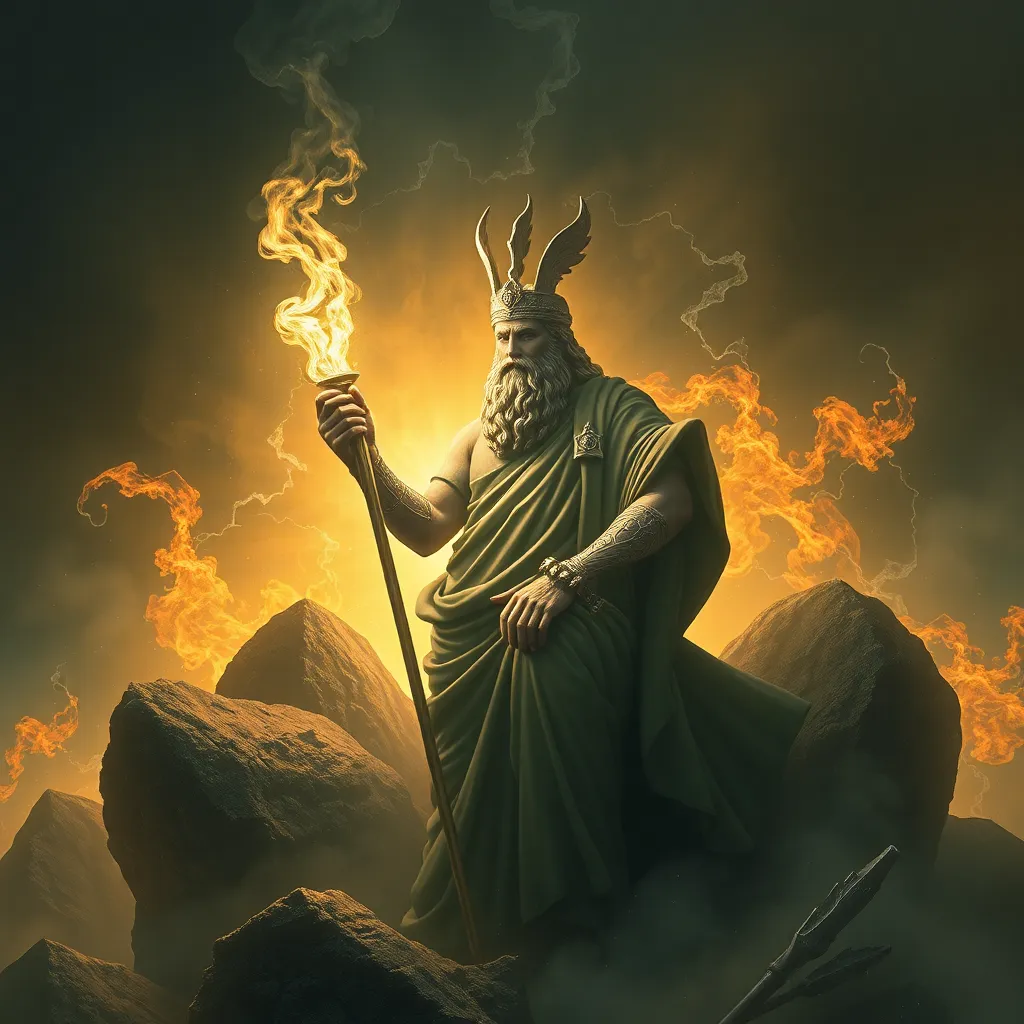The Myths of Hephaestus and the Power of Imagination
I. Introduction
Hephaestus, the Greek god of fire and craftsmanship, occupies a unique place within the pantheon of Olympian gods. Often overshadowed by his more glamorous counterparts, Hephaestus represents the power of creativity and the beauty of labor. His myths not only tell the story of a master craftsman but also highlight the importance of imagination in myth-making and storytelling.
This article aims to explore the myths surrounding Hephaestus while examining their implications on creativity and imagination. Through his narrative, we can discover how the themes of resilience, artistry, and innovation continue to resonate in our lives today.
II. Hephaestus: The God of Fire and Craftsmanship
Hephaestus was born to Hera, sometimes said to be fathered by Zeus, but in some versions, he is considered to have been born from Hera alone. His birth is marked by tragedy; Hephaestus was born with a physical deformity that made him unlike the other gods. This deformity led to his rejection by both parents, particularly by Zeus, who cast him out of Olympus.
Despite this harsh beginning, Hephaestus carved out a significant role among the Olympian gods. He became the divine blacksmith, creating not only tools and weapons but also remarkable artifacts that showcased his unparalleled skill. His work included:
- The armor of Achilles
- The chains that bound Prometheus
- The magnificent palace of the gods on Mount Olympus
In ancient culture, fire symbolized transformation and creativity. Craftsmanship, often tied to divine inspiration, was revered as a sacred art form. Hephaestus embodies these ideals, representing the connection between creativity, labor, and the divine.
III. The Myths Surrounding Hephaestus
Hephaestus’s myths are rich with themes of creation and artistry. One of the most notable stories is the creation of Pandora, the first woman, who was crafted by Hephaestus at the behest of Zeus. Pandora’s significance lies in her role as a bearer of hope and the harbinger of troubles, encapsulating the duality of creation.
Another aspect of Hephaestus’s mythos is his role in forging weapons for gods and heroes. His craftsmanship is legendary, and he is often credited with creating:
- The thunderbolts of Zeus
- The helmet of invisibility for Hades
- The shield of Heracles
Additionally, Hephaestus’s tumultuous marriage to Aphrodite, the goddess of love and beauty, adds to his narrative complexity. This union, fraught with infidelity and heartache, serves to highlight the contrast between physical beauty and inner worth, illustrating the struggles of an artist in love.
IV. The Theme of Isolation in Hephaestus’s Myths
Hephaestus’s physical deformity not only shaped his identity but also impacted his relationships with the other gods and mortals. Despite being a master craftsman, he faced isolation and rejection, often working alone in his forge. This theme of isolation is paradoxical; Hephaestus is both an outcast and a creator of beauty.
His story teaches valuable lessons about resilience and creativity in the face of adversity. Hephaestus exemplifies how isolation can lead to introspection, allowing for artistic growth and innovation. His experiences resonate with anyone who has faced challenges, reminding us that creativity can flourish even in solitude.
V. The Role of Imagination in Creation
Hephaestus stands as a symbol of artistic imagination. His ability to transform raw materials into works of art speaks to the power of creativity and innovation. The interplay between myth and creativity in his stories illustrates how imagination can transcend limitations and give birth to extraordinary creations.
Imagination is crucial in turning adversity into art. Hephaestus’s struggles and triumphs serve as a reminder that the flames of creativity can be ignited even in the darkest of circumstances. This transformation echoes the artistic process—pain and beauty often coexist in the realm of creation.
VI. Hephaestus’s Legacy in Art and Literature
Hephaestus’s influence extends far beyond ancient mythology. His representations in classical and modern art have immortalized him as a figure of creativity. Artists from antiquity to contemporary times have depicted Hephaestus, often highlighting his craftsmanship and the beauty of his creations.
In literature, Hephaestus appears in various texts, from Homer’s “Iliad” to modern adaptations of Greek myths. His character has inspired countless narratives, showcasing the enduring nature of his legacy. The myths surrounding Hephaestus continue to resonate, reminding us of the timeless connection between art and storytelling.
VII. The Broader Implications of Hephaestus’s Myths on Imagination
The myths of Hephaestus impart valuable lessons regarding the power of imagination in overcoming obstacles. His life story encourages us to embrace our creativity, even in the face of challenges. The connection between craftsmanship and creativity is evident; both require dedication, perseverance, and an imaginative spirit.
Furthermore, Hephaestus’s narrative encourages a culture of innovation and artistic expression. By valuing creativity and the arts, society can foster environments where individuals feel empowered to create and innovate, just as Hephaestus did in his forge.
VIII. Conclusion
In summary, Hephaestus’s significance in mythology extends beyond his role as a god of fire and craftsmanship. His stories embody the power of imagination and creativity, demonstrating how adversity can lead to artistic brilliance. The myths of Hephaestus inspire us to embrace our imagination in our own storytelling and creative endeavors.
As we reflect on Hephaestus’s legacy, let us remember the importance of creativity in shaping our world. May we draw inspiration from his tale and cultivate our imagination, transforming our experiences into art and innovation.




